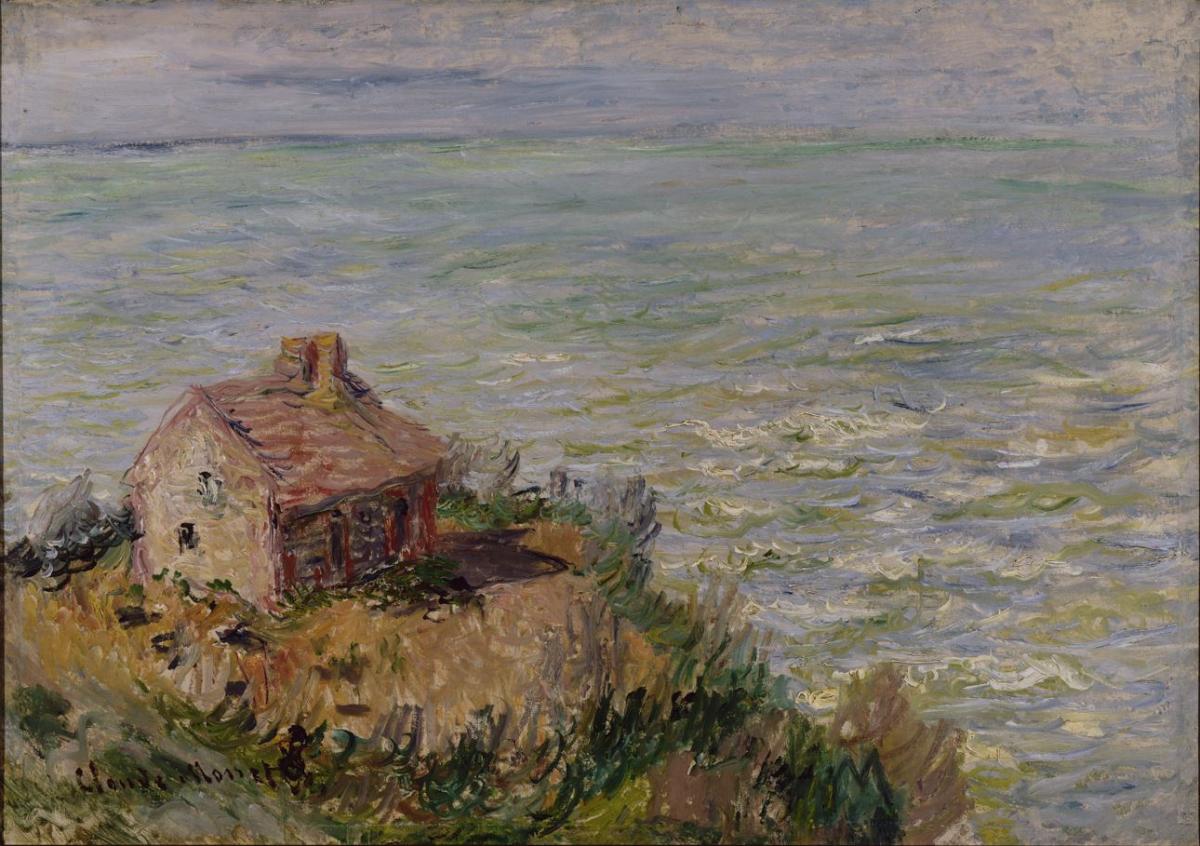Temporary display. Impressionist cycle (1874-2024)
As Edouard Manet's Le Balcon joins the musée d'Orsay, the hanging around the pre, para and post-impressionist collections of the museum of Fine Arts continues until November 18 in the Bonheur wing around Claude Monet's La Cabane des douaniers.
On 15 April 1874, 31 artists, including the renowned figures Monet, Renoir, Degas, Morisot, Sisley and Pissarro, decided to shake off academic conventions by holding their own exhibition outside of the official Salon, in photographer Nadar’s studio on Boulevard des Capucines in Paris. This initial exhibition, which was followed by 7 others up to 1886, announced the emergence of the 20th century’s avant-garde artists.
To join in the celebrations of the 150th anniversary of the first impressionist exhibition and thus the birth of the movement, the Musée des Beaux-Arts de Bordeaux presents a masterpiece on exceptional loan from the Musée d’Orsay: La Cabane des Douaniers by Claude Monet (1840-1926).
The presence of this special guests offers an opportunity to showcase the Museum’s pre-impressionism to post-impressionism collections, around Jean-Baptiste Corot and the Barbizon school (Narcisse Diaz de la Peña, Charles-François Daubigny, Henri Harpignies), Eugène Boudin and his Port de Bordeaux (1874) echoing Monet’s emblematic Impression, Sunrise (Marmottan-Monet Museum, Paris), Georges Seurat, John Lewis Brown, Louis Tauzin, Alfred Roll, Henri de Toulouse-Lautrec, the Bordeaux-based artists Alfred Smith et Clémentine-Hélène Dufau, Auguste Renoir, Berthe Morisot (the model for Le Balcon) and Mary Cassatt.

Claude Monet, La Cabane des douaniers. Effet d'après-midi, 1882. © Musée d’Orsay.

Eugène Boudin, Bordeaux. Le voilier blanc. Effet du soir, 1874. © MusBA.
Zoom on La Cabane des douaniers
Regarded as the father of Impressionist painting and a champion of plein-air painting, Claude Monet was deeply influenced by the atmospheric effects of William Turner's paintings and by Gustave Courbet's rapid brushstrokes.
La Cabane des douaniers bears witness to Monet's attachment to capturing the vibrations of light and colour. Inspired by the advice of Eugène Boudin, Monet chose to paint outdoors, a choice that had a profound influence on his art and would later lead him to say: "Boudin, with inexhaustible kindness, undertook my education. In time, my eyes were opened and I truly understood nature.”
This painting is the first in a series on this motif. In the 19th century, these huts, located on coastal paths and often built by the customs officers themselves, served as surveillance posts and shelters against bad weather. In 1882, Monet stayed in Pourville, a small hamlet near Dieppe, and discovered the Petit Ailly post on the cliff at Varengeville. This hut became a fertile source of inspiration: he reproduced it 13 times in 1882, before returning to the subject in 1896-1897 with a new series of 17 canvases.
In 2024, the French Ministry of Culture and the Musée d'Orsay will be celebrating 150 years of Impressionism. In parallel with the exhibition Paris 1874. Inventing Impressionism exhibition in Paris, some 180 works on special loan from the Musée d'Orsay will be on display in over 30 museums across France.









